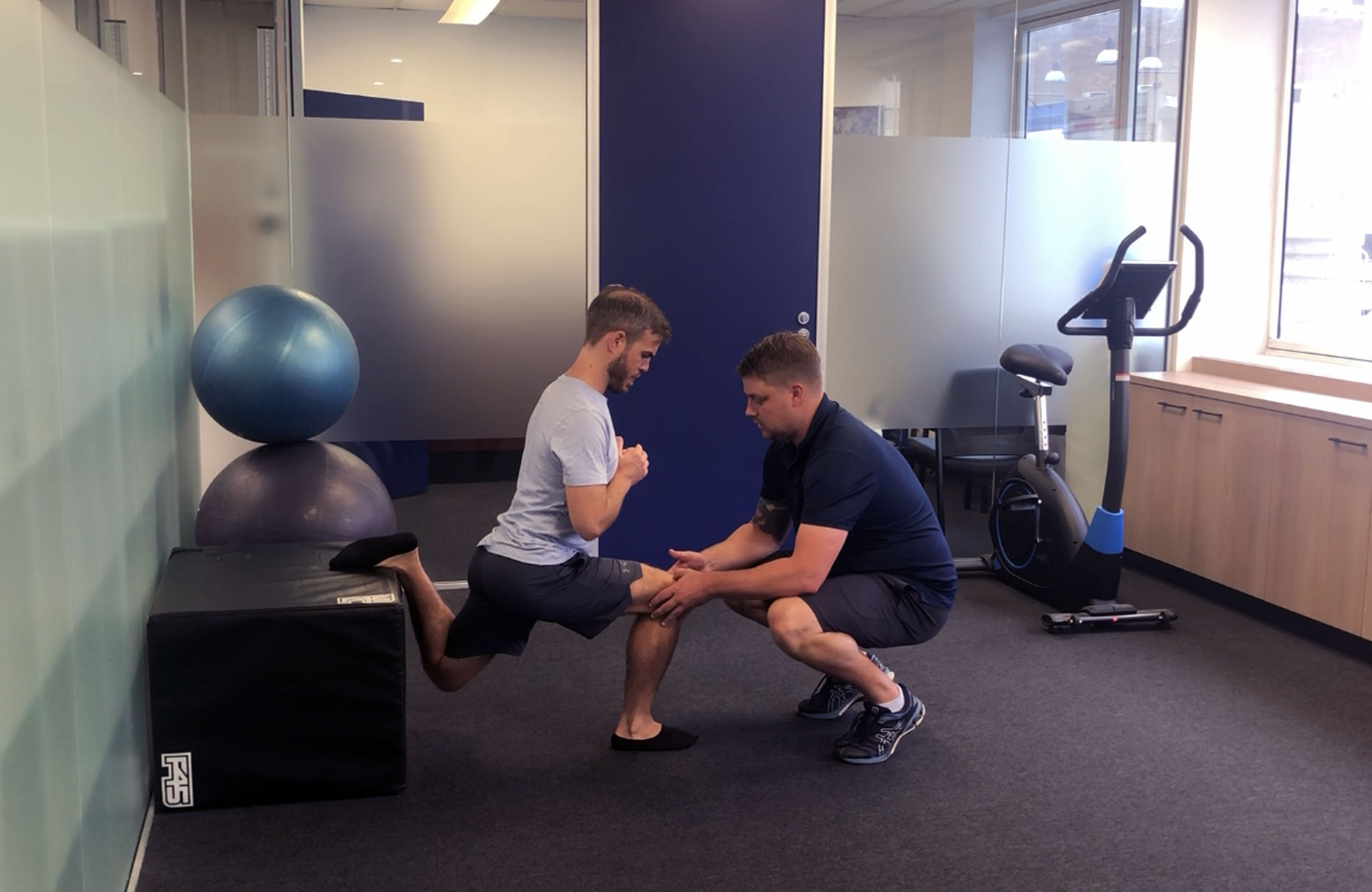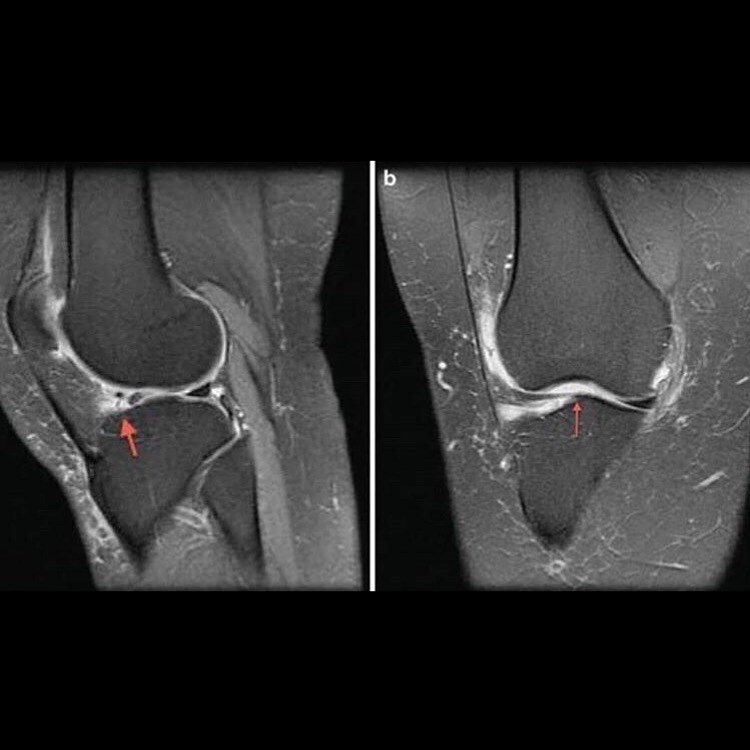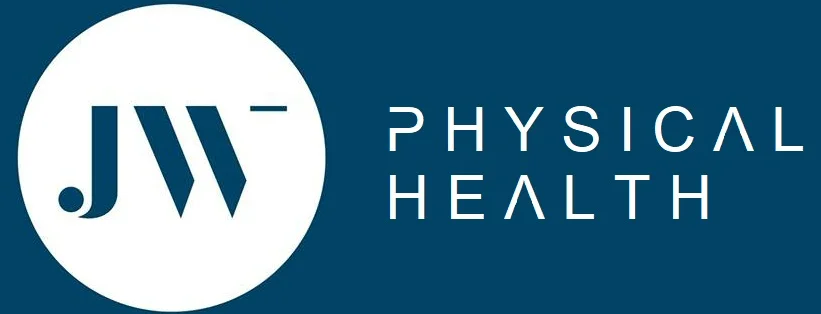
Knee Injuries & Meniscus TearsPhysiotherapy Treatments - Bondi Junction, Eastern Suburbs, Sydney
Knee Injuries & Meniscus TearsPhysiotherapy Treatments - Bondi Junction, Eastern Suburbs, Sydney
Posted in Physiotherapy by Jason Wright on April 25, 2020.

The medial and lateral menisci are the shock absorbers between the femur and the tibia.
Acute knee injury and meniscal tears generally occur with compressive and twisting forces on the knee.
As we age, it is quite common to get degenerative meniscal tears as well.
In fact, research shows that 60% of people over 50 years of age will have a degenerative meniscal tear on MRI without any noticeable pain.
Physiotherapy May Be More Suitable than Surgery for Meniscus Tears
Surgical intervention for meniscal tears should be reserved for patients with associated knee locking or knee instability.
This is because there is a wealth of evidence that shows that physiotherapy is a viable alternative to arthroscopic partial meniscectomy surgery in the treatment of knee issues related to non-obstructive meniscal tears.
How to Diagnose a Knee Injury or Meniscus Tear
If you’re experiencing pain in your knee it’s important to receive a proper diagnosis.
Clinically, physiotherapists have some very valid clinical tests to assess the integrity of the structures of the knee joint.
However, MRIs can show the soft tissue damage.
If we suspect injury to multiple structures, or if it is an acute injury with associated locking or instability with a high chance for need of surgical intervention, we advice to take an MRI.

Factors that Increase Your Risk of Knee Injury
There are many underlying health factors that can lead to knee injury and pain.
Common risk factors include:
- Being overweight (degenerative meniscal tears)
- Male’s are more likely than females to experience injury
- Suffering trauma to the knee (loaded twist mechanism)
- Sport participation (commonly contact or dodging sports)
- Occupational activity (kneeling, squatting, stair climbing)
- Generalised joint hypermobility
Goals of Rehabilitation & Recovery When We Are Treating Knees
Once your knee injury is confirmed, we’ll get started on your rehabilitation and recovery.
There are several goals we will set for your recovery.
The primary goals for the rehabilitation process are outlined below.
Improve Range of Knee Movement
It is not uncommon to have limited flexion/extension associated with a meniscus tear.
It’s important to regain full range of motion while eliminating swelling.
Move often and within comfortable limits, you will find it loosens/eases as you repeat 20-30 reps.
Increased Hip Strength and Mobility
The hips are often a key contributor into the cause of a Meniscal tear.
Strengthening your hip and increasing their mobility will help your knee.
Gradual Improvement Achieved with Graded Exercise
We expect results fast, but it’s important to be realistic.
Start with what you can do and gradually build up to what you want to do.
Addressing VMO activation and coordination is a crucial step in early stages of rehabilitation.
Early Treatment and Management is Crucial
If you are found to have suffered a meniscus tear, early treatment and management is crucial to a full and fast recovery.
The aim of early management is to manage pain, reduce swelling, improve movement/loosen guarding muscles, activate and strengthen the muscles around the knee.
Graded Exercises form the Foundation of Knee Rehab
If you suffer a meniscus tear, graded exercise will be prescribed to you to help you recover.
These form the foundation of your rehab.
The video below outlines 4 basic exercises that we commonly prescribe, and that you can try.
Each exercise is explained in more detail below.
1. Active assisted range of motion
Use the towel around the heel to guide the knee through bending and strengthening. Touch into some discomfort without aggregating it and pull into stiffness. 30 reps x3/day.
2. Inner range quad activation
Start with pressing the back of the knee into the towel and straightening the knee, use your finger to feel for contraction of the VMO (the muscle located above the knee cap on the inner/front of the thigh) 10 sec holds x6, followed by 10 quick contractions and release slowly.
3. Inner range quad coordination
This is a progression from exercise 2.
Step the heeling leg through a theraband of medium to strong resistance.
Take it back on stretch with feet and knees together.
Control the knee into bending with the heel off the floor and return to straight again.
The key is in the slow control of the movement.
3s:3s tempo x20, 3sets.
4. Foam rolling
Loosening off all muscles surrounding the knee; calves, hamstrings and quads is ideal.
Find tender spots and spend more time there.
Aim for 5-10 minutes on the roller daily.
More Information About Knee Injuries & Meniscus Tears: Physiotherapy Treatments - Bondi Junction, Eastern Suburbs, Sydney
For more information about Knee Injuries & Meniscus Tears: Physiotherapy Treatments - Bondi Junction, Eastern Suburbs, Sydney , or any other physio related questions you might have please get in touch.
